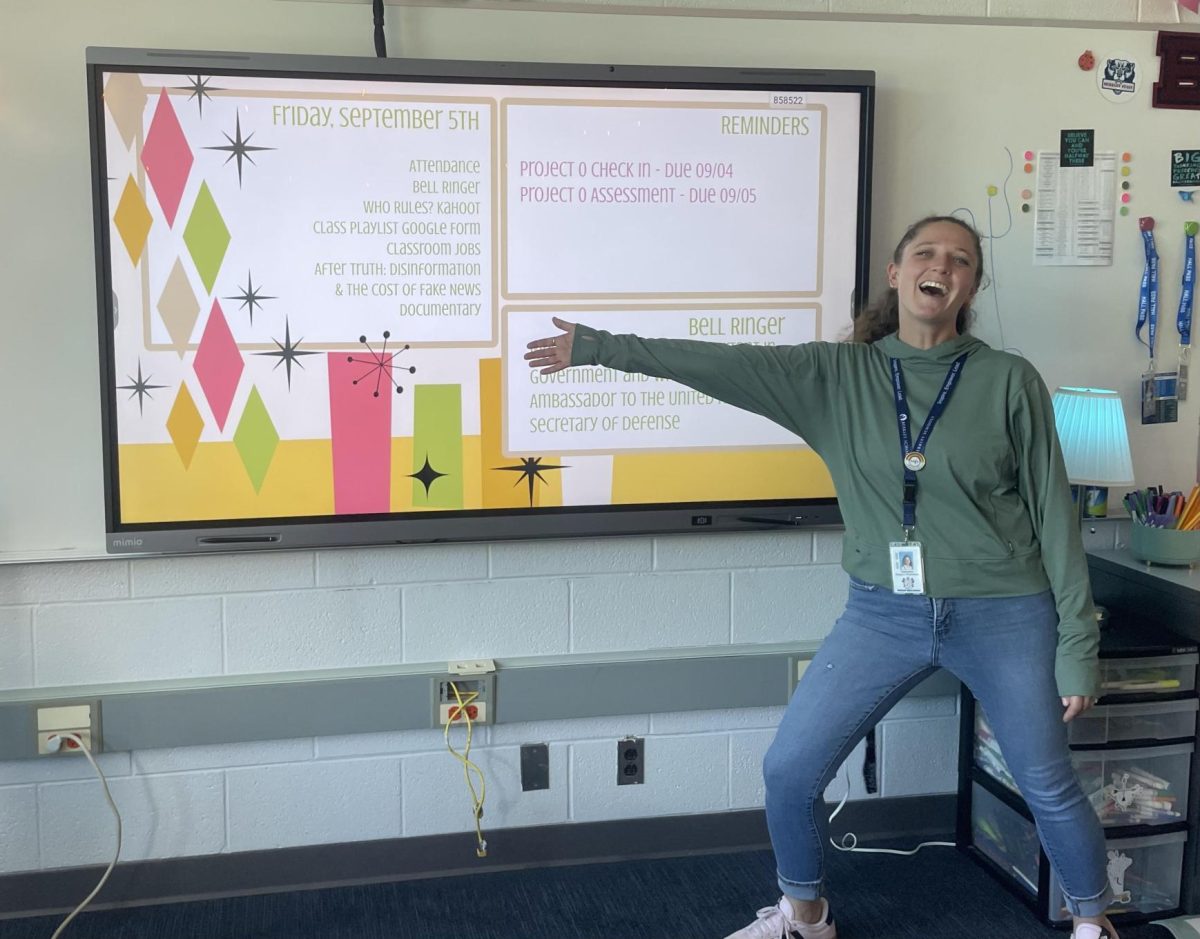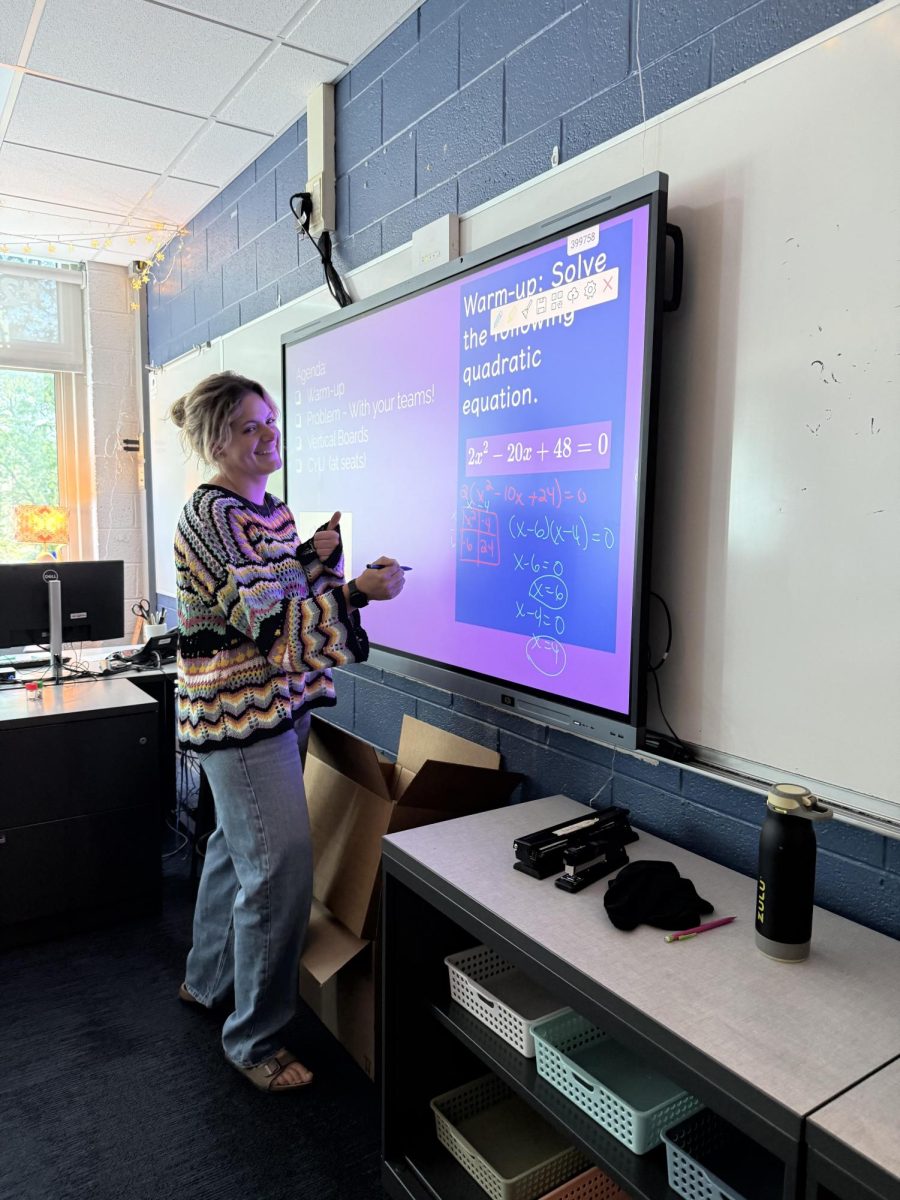Social media has become a primary news source for many teenagers, keeping high school students up to date on current events. However, there are many features that set social media apart from other news outlets. Considering the concentration of a large amount of content in such a small space and conflicting information, it can be hard to navigate what’s real and what’s fake. This issue is further complicated when AI and propaganda dominate a large portion of the content we consume. Aside from trying to understand all the information on social media, many also struggle with finding their role in all of it. More specifically, many grapple with knowing how to take part in online advocacy the “right” way. Now more than ever, with hard to understand overseas conflicts like the Israel-Hamas war—which affects so many—an extra pressure is put on individuals to take a public online stance. It is situations such as these that illuminate the larger flaws of social media. Many feel the need to participate in online activism regardless of their education, understanding, or motivation. The unfortunate result of this pressure is oftentimes the rapid spread of misinformation which in turn can lead to online controversies and harassment. To gain a better idea of how to participate in advocacy online, it is important to understand the flaws and limitations of social media.
Although social media is a convenient platform to communicate with others and stand up for what you believe in, there are some disadvantages associated with it. Aside from being a convenient place to practice your first amendment rights, social media is also an easy platform for anonymous harassment and bullying. With features like computer-generated usernames and private profiles, many feel empowered to say whatever they want—regardless of the harm they may cause—knowing their identity will remain anonymous. The anonymity of online platforms also enables individuals to spread false information without fear of repercussions.
One form of misinformation that is becoming especially common on social media is anti-semitic propaganda. Studies recently conducted by the Anti-Defamation League and the Tech Transparency Project revealed that social media algorithms and search functions promote the spread of anti-semitism, specifically to young users. This means that the more an individual engages in anti-semitic content–or content of any kind–via comments, shares, likes, or saves, the more related content the algorithm will provide them. Although personalized algorithms are why so many people are attracted to social media, this AI should not be applied to harmful prejudices. The best way to combat any kind of harassment online is by reporting it. When you come across hateful content on social media, it is important to report it. Not only will this detract credibility and limit the future capabilities of the account, given the algorithm that strategically feeds us our content, reporting posts will also decrease the amount of similar content on your social media feed.
In addition to making use of the reporting feature, it is equally as important to conduct your own research and acknowledge other opinions when you see conflicting information. Given the limited space of most social media platforms like X, Instagram, Facebook, and Snapchat, many “news related” posts exclude their references, sources, editors, and publishers. Even information like who funds the study or publication can be useful in determining the credibility of a source. It is important to consider what other sources say about the same issue when trying to identify if something you see on social media is true or not. Mr. Meloche says “I usually try to vet it by going to other sources. For instance, if I’m on Instagram and see some news, I will hop on my laptop and do some research; I’ll go down a few rabbit holes and look at more reputable journalistic sources like The New York Times or The Washington Post.” Aside from looking for credible sources and consistencies, Senior Marley DeRoven says she “tries to use non-biased news sources that take a factual approach to current events, such as NPR.” DeRoven also says that when it comes to determining her role in online activism, she chooses to give a platform to the things that she is really passionate about, listing things like “LGBTQ rights, women’s rights, and racial equity.”
Another limitation associated with social media is the lack of space to go in depth on an issue. Many seemingly “informative” and “educational” posts take the form of an image supplemented with a short caption. Many platforms also make use of character limits, forcing what could have been a ten page article into just a few sentences. By limiting the amount of information that can be communicated through a single post, it is easy for things to be misinterpreted, leading to confusion and false understandings.
Aside from social media limiting the amount of content that can be shared, it also fails to replicate authentic human interactions that are necessary when navigating complex, nuanced issues. Mr. Meloche shares that social media “isn’t always the best form for a discussion. It completely excludes natural features of human conversation such as verbal cues, social cues, facial expressions, body language, reactions, and responses.” Even comment sections and digital messages are limiting when it comes to mimicking human interactions on a screen. Senior Penelope Cohen shares that “when trying to learn about what was happening in Israel, it was hard for me to gain a good understanding of the war, with just a few words and pictures on Instagram. I ultimately went to my parents to get an accurate and complete understanding of what was really going on.” Cohen demonstrates not only how limiting it can be to consume news via social media, but also the power of talking with trusted adults and friends. Given the lack of intimacy, authenticity, and safety that comes with conversations via digital messaging, confiding in people who you feel comfortable with is a great way to conduct meaningful discussions. By talking to friends and family about issues that matter to you, it is easier to feel safe in your exchanges, as well as empowered to learn more and ask questions.
In addition to misinformation and discussion limitations, social media also serves as a convenient platform for “lazy activism”. Lazy activism describes acts of online advocacy that are deemed ineffective. The most common ways lazy activism presents itself is through hashtags, reposts, or online petitions. Critics of this kind of activism say that it is disengaging, often oversimplifies complicated global problems, and does not result in impactful change. Along with this, a lot of people are replacing more effective forms of activism with lazy activism. The pressure to take a public political stance also causes many to participate in what would be labeled as lazy activism. People who are unsure of where they stand on an issue or who are not fully educated on a topic prematurely publicize their “beliefs” and “opinions”. Many also publicize what they believe is “right”, not to cause meaningful social change, but as a performative ploy to seem politically educated. The unfortunate result of this is the spread of harmful and sometimes false information. The consequences of lazy activism represent the unintended side effects of participating in online activism. To avoid contributing to the cycle of misinformation on the internet, many resort to staying silent. In some cases, it is a viable option when assessing your personal role in online activism. In instances where one feels overwhelmingly uncertain, uncomfortable, or uneducated, it may be best to pause before reacting, reposting, or sharing content via social media. However silence alone is ineffective and can even be harmful. DeRoven agrees with this, explaining “Being silent about what’s happening [the Israel-Hamas War] is really harmful to both parties. It’s also really harmful to the Jewish rhetoric when people who are or aren’t Jewish are silent because this doesn’t just affect Israeli Jews, it affects Jewish people everywhere. I think it’s really harmful to stay silent, regardless of where you stand with the conflict. Using your voice whenever you can is the best way to eventually reach peace.”
In addition to DeRoven’s testimony speaking to the feelings many share about the silence surrounding the war, her words pose an opportunity to ask the question: what is the “right” way to remain silent? Although there is no inherently correct way to be an advocate, when choosing to remain silent on social media platforms it is important to exercise your role as an activist through alternative approaches. One thing that is crucial for all individuals who are navigating global conflicts and other complex issues, is to educate yourself and actively conduct research in order to learn more and gain a thorough understanding. As demonstrated earlier, seeking to learn more goes beyond just relying on credible journalist sources. It can also mean participating in meaningful conversations with friends and family, listening to podcasts, and engaging in content from conflicting viewpoints. Aside from staying knowledgeable and up to date, it is also important to remember that online advocacy is just a small segment of activism. Furthermore, what is even more impactful is continuing to embody an activist in everyday, real life. For Cohen this means “Being a member of the UMatter board where we advocate for normalizing mental health.” Getting involved in organizations that align with your personal values is a great way to participate in activism. DeRoven shares that for her a big part of being an activist is “Planning and participating in protests in support of things that I care about. I attend a lot of meetings for different nonprofit organizations to talk and learn about what’s going on in the world. I was also a fellow for the Youth Peace Collective which taught teens the history behind Israel and Palestine. Overall, while I try to post things online, I also try to engage in the real world around me and not just stay behind the screen.” Both DeRoven and Cohen demonstrate the real ways you can be an active advocate for the things you care about. Although social media is consuming basically all facets of our lives, traditional advocacy lives on and remains everso vital.
Regardless of how you decide to practice advocacy, it is important that you do so in a way that is authentic to your personal beliefs and morals while simultaneously being respectful of others. Mr. Meloche also shares that when participating in activism via social media it is especially important “to be thoughtful and intentional because it can be easy to react to things and get caught up with what’s online. I also think we are very quick to judge people for what they do and don’t post. Everyone is just trying to figure things out so I think if we have patience with each other, the world will be a little bit better of a place.”
All in all, while social media makes advocacy accessible to virtually anyone, by understanding its many flaws and shortcomings, we are all empowered to use it in the most productive way possible.








